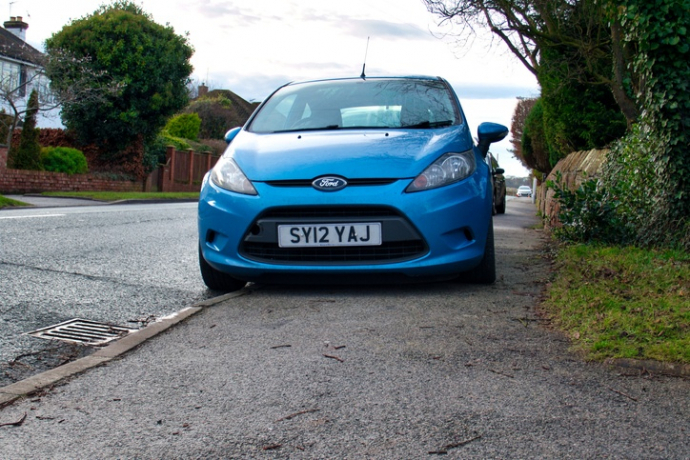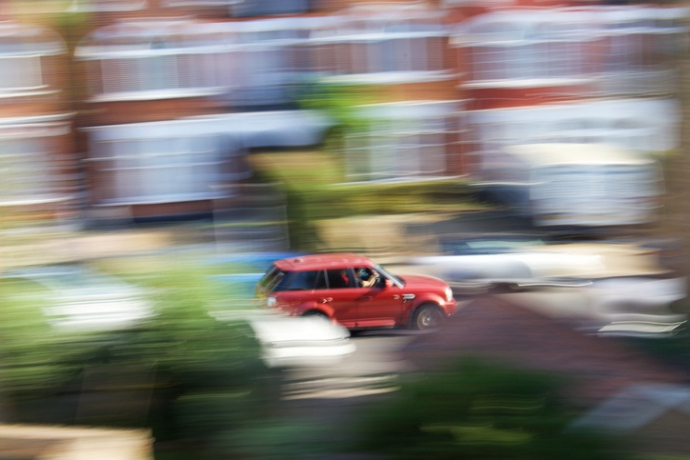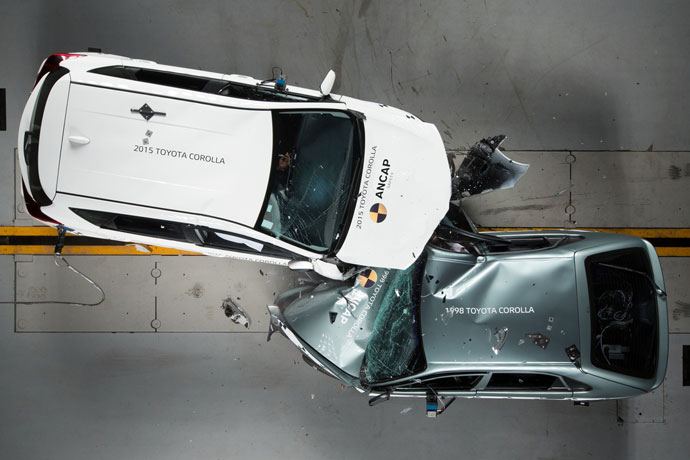
With over half of motorists breaking 30mph speed limits and an estimated 1 million uninsured vehicles on UK roads, law-abiding drivers could be forgiven for thinking UK roads are a hotbed of criminality. With a long list of misdemeanors to choose from, it’s hard to whittle it down to 7 motoring mortal sins. How about these for starters? Please add your own in the comments.
The close pass
Nobody knows for certain why some drivers insist on overtaking cyclists too close. However, it’s rarely because they’ve failed to spot the person on the bicycle. Close passes by motorists are as much a part of UK roads as potholes, but there can be only two possible explanations for why a motorist overtakes dangerously close to a cyclist – incompetence or malice.

Pavement parking
Pavement parking is anti-social and dangerous. People with mobility difficulties or visual impairments and people who care for others are adversely affected by pavement parking and children are at particular risk. Quite apart from the physical danger it creates for pedestrians, pavement parking damages paving stones and kerbs and generally brutalises the built environment.

Speeding
Putting aside the question of why it’s possible to buy cars for the road that are capable of exceeding the motorway speed limit by 100% (especially when legislators have gone to great lengths to limit e-bikes to 15mph), neither the threat to other people’s lives nor the risk of penalties dissuades motorists from driving within the law. For example, in 20mph zones where drivers had an opportunity to speed because there were no obstructions or other factors that might limit speed, 86% per cent of car drivers broke the speed limit.

Mobile phone use
The threat of a fine of £200 and 6 penalty points does little to dissuade many drivers from using their phones behind the wheel. Motorists know the risk of getting caught is extremely low and ignore the fact they’re putting lives at risk. As a result, the behaviour has become endemic.

No insurance
Despite ANPR (automatic number plate recognition) cameras in some police force areas identifying over 4,000 uninsured vehicles every day, very few drivers receive a penalty or are sent for prosecution.
In 2018, only 79,713 drivers received penalty points for having no insurance – a drop of one third on the previous year. It is estimated that uninsured drivers cost law-abiding motorists around £33 a year in increased premiums, but the cost to society is far higher. According to the police, uninsured drivers are six to seven times more likely to be involved in a fatal collision and 65% have been criminally active in the previous two years (not just traffic offences).
A freedom of information request made by us revealed there is no fully automated process in place for dealing with uninsured vehicles. Britain’s network of ANPR cameras read the details of all vehicles as they pass the camera site. The details recorded can then be automatically checked against data from the Motor Insurance Bureau. However, no process is in place to automatically contact the registered keeper of the vehicle as is the case with speed cameras.

Driving under the influence
There were over 25,000 convictions for drink driving in 2020 and drug driving is a new and unwelcome cause of road danger. In mainland Europe, the limit is either 50mg or 20mg. Here in the UK the limit is up to 4 times higher at 80 milligrams of alcohol per 100 millilitres of blood.
Cutting corners
The inability to correctly negotiate corners presents a significant danger to other road users. If you know why this happens so often, please let us know.

The ethical choice
The ETA was established in 1990 as an ethical provider of green, reliable travel services. Over 30 years on, we continue to offer cycle insurance , breakdown cover and mobility scooter insurance while putting concern for the environment at the heart of all we do.
The Good Shopping Guide judges us to be the UK’s most ethical provider.

Rod King
Hi
The statement ” For example, in the 20mph zones intended to safeguard areas where people live and children go to school, 86% per cent of car drivers break the speed limit.” is incorrect. The DfT does track non-compliance of speed limits and do so at sites without hazards or obstructions which may influence drover speed. The 10 locations used for 20mph align with this and as a result are NOT on roads with housing or school frontage. The report warns readers that such sites are ATYPICAL of most 20mph limits or zones. Other research using “floating car data” shows that in 20mph limits without physical calming 75% of drivers are within the police enforcement threshold of 24mph and this rises to 80% in city streets.
Whilst pleased to see speeding being addressed as a “mortal sin” it is important to report proportionately and recognise that 20mph speed limits do reduce speed significantly such that authority-wide implementation across communities results in casualty reductions of 20-40% (Bath, Edinburgh, Bristol, Edinburgh, Calderdale, Cheshire West and Chester, London). Their efficacy should not be undermined by inaccurate reporting. Hence behaviour on 10 specific atypical sites should not be extrapolated to “all drivers”. A correction would be welcomed.
The ETA
Thanks for the clarification and we’ve updated the copy accordingly. It does underline the challenge of enforcement and more importantly the need for roads to be engineered for local limit
whobiggs
Why do people cut corners? Because, as Chris Boardman said, roads are being increasingly designed to aid/speed flow of vehicles. Thus anything that prevents that flow gets in the way. Sadly pedestrians and cyclists get in the way. We get used to travelling at a certain speed and don’t like the inconvenience of changing it so when an obstacle appears people are often not prepeared to react. Ironically he said, and I agree, corners should be kade sharper to slow people more. There is a mini island near me and people mostly don’t slow down at all, it aught to be a slightly raised kerb. That way if a vehicle needs to go over it they can but not slowing down may damage the vehicle.
David
You make a very good point about there being no automated process to contact / prosecute uninsured drivers.
Given the substantial Societal harm (and cost) done by uninsured drivers, this is surely inexcusable. If we can afford to construct ULEZ detection systems to automate ULEZ daily charges, then there is just no reason why we can’t do the simpler job of automating insurance enforcement.
Time for a campaign?
Jen
Agree with all of these. My cycle to work is almost completely off road (a real joy). There are two very short on road sections, one in a quiet residential estate, the other a busy artery into the city centre. Both include several of the above issues every day. The close pass is the most frequent, and can be relied upon to happen 1- 5 times a day in both settings. The corner cutting is also a daily issue, with drivers looking surprised at my being in the centre of my lane when I am waiting and signalling to turn right, when they prefer to be there when cutting a corner from their lane to turn across me. It’s careless and I think there’s a belief that they are actually a part of their car, bigger than any cyclist, and therefore more important. I am often in a line of other cyclists, all of us being close passed by one ‘superior’ driver.
Alastair
Video reporting of close passes should be made much easier, here in Lothian, Scotland the process is so time consuming and awkward you have to be patent and determined to report anything. Witness the 7 I had on my ride today!!!